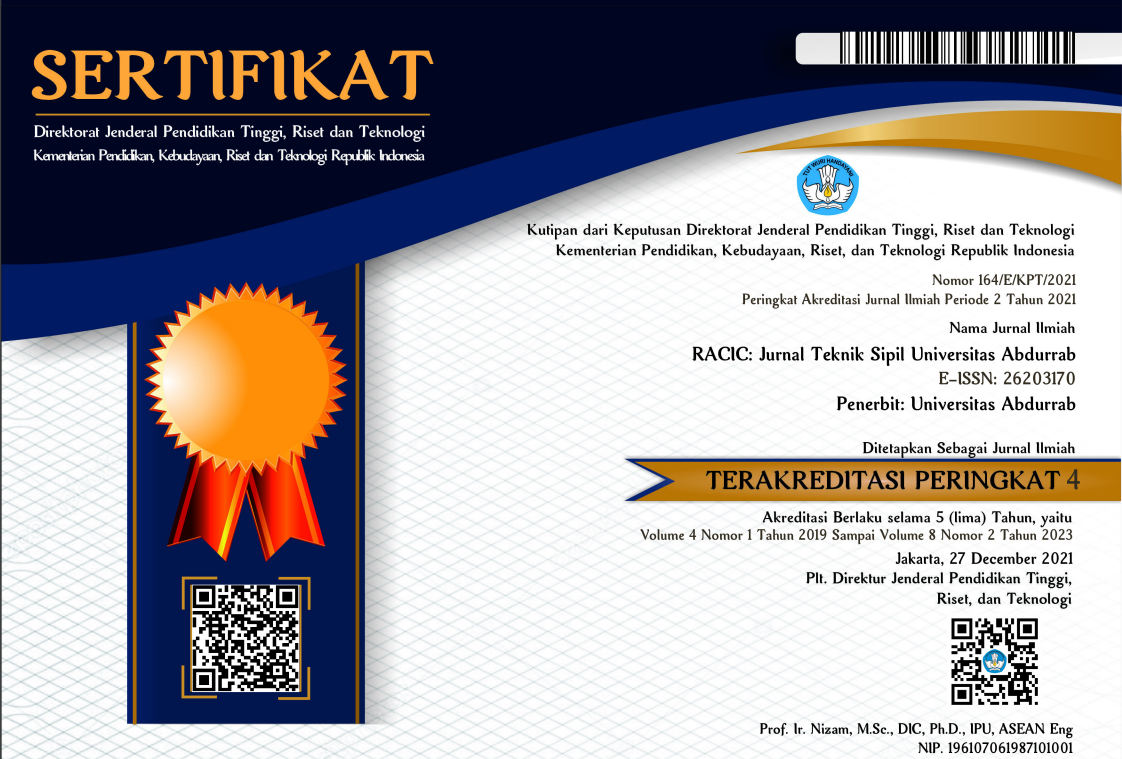KARAKTERISTIK PENGGUNA DAN MANAJEMEN TRANSPORTASI ANTARMODA DI WILAYAH CIREBON SELAMA PANDEMI COVID-19
Abstract
The era of disruption expanded due to the Covid-19 pandemic in mid-March 2020 globally, including in the transportation sector. An investigation was conducted to identify the characteristics of users of intermodal public transportation and management of intermodal transportation in Cirebon, West Java, Indonesia. The investigative design used mixed methods. The sample with accidental sampling technique was 300 respondents, and 6 transportation experts in Cirebon City. The data were analyzed descriptively and multicriteria decision through AHP. The investigation provides information that: (1) Characteristics of respondents using intermodal transportation are 21-30 years old, male, last education D3/S1, private employee, with income less than 1.5 million per month. (2) Alternative policies that should be taken by the Cirebon City Government in overcoming traffic problems in the Cirebon area are as follows: (a) Revision of Regional Regulation No. 8 of 2016, (b) Development of Mass Transportation Systems. Policy for developing an integrated public transportation system in the form of bus rapid transit. This policy is a step to solve traffic jams that can reduce the use of private vehicles
References
Transp. Multimoda, vol. 14, no. 4, pp. 193–206.
“Geograpich and Climate.”
O. Elmansouri, A. Almhroog, and I. Badi, “Urban transportation in Libya: An overview,” Transp. Res. Interdiscip. Perspect., vol. 8, p. 100161, 2020, doi: 10.1016/j.trip.2020.100161.
M. Kadarisman, A. Gunawan, and I. Ismiyati, “Implementasi Kebijakan Sistem Transportasi Darat Dan Dampaknya Terhadap Kesejahteraan Sosial Di Jakarta,” J. Manaj. Transp. Dan Logistik, vol. 2, no. 1, p. 59, 2017, doi: 10.25292/j.mtl.v2i1.129.
P. Publik, D. I. Sektor, and P. Darat, “Kementerian perhubungan,” vol. 1, no. 8, p. 3811308, 2020.
M. D. Arifin, “Impacts of Coronavirus COVID-19 on the Global Shipping and Maritime Industry in Indonesia and How to Overcome the Coronavirus Outbreak Based on WHO and IMO Recommendations,” pp. 1–22, 2020, doi: 10.31219/osf.io/crgv3.
A. Tirachini and O. Cats, “COVID-19 and public transportation: Current assessment, prospects, and research needs,” J. Public Transp., vol. 22, no. 1, pp. 1–34, 2020, doi: 10.5038/2375-0901.22.1.1.
A. Khaira and R. K. Dwivedi, “A State of the Art Review of Analytical Hierarchy Process,” Mater. Today Proc., vol. 5, no. 2, pp. 4029–4035, 2018, doi: 10.1016/j.matpr.2017.11.663.
presiden republik Indonesia, “UU no.22 tahun 2009.pdf.” 2009.
Firdasari., Iqbal. (2019). Penerapan Metode Analytical Hierarchy Process Dalam Penentuan Prioritas Penanganan Jalan. Jurnal Teknik Sipil Unaya, Vol. 6, No.1, 1-13. http://jurnal.abulyatama.ac.id/tekniksipilunaya

This work is licensed under a Creative Commons Attribution-NonCommercial-ShareAlike 4.0 International License.
1. Copyright of all journal manuscripts is held by the RACIC : Rab Construction Research
2. Formal legal provisions to access digital articles of electronic journal are subject to the provision of the Creative Commons Attribution-ShareAlike license (CC BY-NC-SA), which means that RACIC : Rab Construction Research is rightful to keep, transfer media/format, manage in the form of databases, maintain, and publish articles.
3. Published manuscripts both printed and electronic are open access for educational, research, and library purposes. Additionally, the editorial board is not responsible for any violations of copyright law.
licensed under a Creative Commons Attribution-ShareAlike 4.0 International License.
 PDF (Bahasa Indonesia)
PDF (Bahasa Indonesia)
 Abstract views: 170
Abstract views: 170
 downloads: 182
downloads: 182

 :
:







